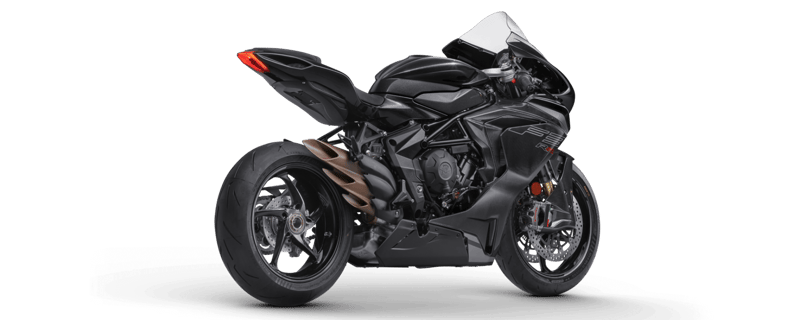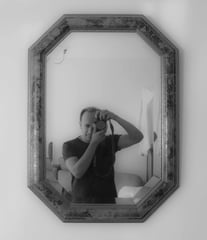NOTE: FOR THE OPTIMUM VIEWING EXPERIENCE WE RECOMMEND THAT YOU VIEW THIS SITE ON A DESKTOP
The Beauty of Asymmetry: Embracing Apparent Flaws in Design
A. Karmakar
10/23/20246 min read


The integration of asymmetry within architectural design presents a unique challenge for architects and designers, who must tread carefully to balance visually engaging elements without compromising overall harmony. Asymmetry, while celebrated for its potential to create dynamic spaces and provoke thought, can also induce feelings of discomfort or chaos, particularly in societies that have long favoured symmetrical design. Thus, the task is to seamlessly blend asymmetrical elements with a mindful approach, ensuring they resonate with the viewer instead of overwhelming them.
To achieve this natural balance, designers often apply specific techniques such as employing contrasting materials, unexpected and yet complementary colour schemas or a variation in height and depth in structural elements. These strategies allow for a sense of flow and rhythm in the composition, guiding the eye through the design while maintaining aesthetic equilibrium. For instance, the famed Guggenheim Museum in Bilbao, designed by Frank Gehry, successfully uses asymmetrical forms that harmonise with one another, thus creating a cohesive yet unpredictable mystery silhouette that invites questions that require exploration.
Another approach involves creating focal points within an asymmetrical composition. By strategically placing elements that draw the eye, designers can engage viewers effectively, ensuring that the overall impact of a space remains intentional. The Santiago Calatrava-designed Milwaukee Art Museum serves as a prime example, featuring asymmetrical wings that seem to lift and unfold, all the while evoking a sense of movement that enhances the visitor experience.
Insights from leading architects underline that studying precedents in asymmetrical design can lead to innovative applications in one’s work. By observing how successful projects balance disparate elements, aspiring designers can learn to craft spaces that thrive in asymmetry, ultimately transforming perceived flaws into celebrated features. In conclusion, the challenge of engineering asymmetry lies in thoughtful execution and a deep understanding of the inner nature of things often visible only to the artistic or designer's eye. These subtle insights can elevate a design into an experience that is both profound and aesthetically pleasing.
Symmetrical design, characterised by its balanced and orderly arrangements, is often celebrated for creating a sense of harmony and predictability. However, its inherent flaw is that it can significantly hinder creativity and innovation in various fields, such as architecture, graphic design, literature and art. While symmetry might provide aesthetic appeal and an organised feel, it may also lead to a sensory experience that is monotonous and lacking in emotional depth.
In architecture, for instance, buildings that strictly adhere to symmetrical principles can blend into their surroundings, rendering them unremarkable. Consider the classic designs of many government buildings; while they exude a sense of stability and order, they can appear uninspired when juxtaposed against structures that embrace asymmetry. This inability to push boundaries often results in spaces that lack character and, consequently, foster little emotional engagement from their occupants.
Similarly, in graphic design, the pursuit of symmetry can hinder marketing efforts. Designs that stick too rigidly to symmetrical frameworks risk becoming forgettable. Brands aiming for differentiation must consider how asymmetric elements can attract attention and evoke greater emotional responses. A case in point is the iconic logo of Apple, strategically designed with simplicity and a hint of asymmetry that distinguishes it in the crowded tech marketplace.
From a psychological perspective, humans are naturally drawn to asymmetry due to its dynamic and intriguing nature. Studies have shown that asymmetrical designs can stimulate visual interest and evoke emotions, creating a more profound interconnection with the viewer. By bending the rules of symmetry, designers can facilitate a richer experience, one that resonates with the audience on a deeper emotional level. This exploration of asymmetry challenges conventional norms, urging creatives to discover the beauty that lies within imperfections.
The exploration of art reveals that it often celebrates asymmetry, reinforcing the notion that true beauty frequently arises from the unexpected. Asymmetry can be likened to the fractal patterns found in nature, where each iteration of a design adds an unpredictable yet captivating complexity. In art, these irregularities and imperfections are not merely flaws but can serve as gateways to deeper meaning and emotional resonance.
Over the centuries, various artistic movements have deliberately embraced asymmetry to convey their messages more powerfully. For instance, the Impressionists broke free from the rigid structures of classical representation, opting instead for spontaneous brush strokes that often resulted in non-uniform compositions. The works of artists like Claude Monet exemplify this approach, using light and colour to create a sense of movement and depth that defies symmetrical expectation.
Further along the spectrum of artistic experimentation, Abstract Expressionism emerged as a powerful response to traditional norms. Artists such as Jackson Pollock utilised chance and randomness in their work, letting the paint flow freely on the canvas. This technique celebrated the chaotic beauty found in asymmetrical forms, fostering a connection between the viewer and the raw emotions conveyed through such irregularities.
Moreover, beauty itself is best understood as a multifaceted concept, not restricted to aesthetically pleasing or symmetrical forms. Contemporary art continues to challenge conventional notions, allowing audiences to appreciate the visual interest arising from idiosyncratic shapes and designs. By examining the fractal nature of beauty present in both nature and artistic expression, one can conclude that it is often within these flaws that art attains its most profound and stirring impact.
In both architecture and storytelling, the incorporation of quirks and vulnerabilities can significantly enhance character design. These elements not only add depth and intrigue but also invite audiences to form authentic connections with the subjects. Asymmetrical designs, often viewed as imperfections, hold the power to evoke a sense of familiarity and relatability. This approach diverges from traditional aesthetics that prioritise uniformity and perfection, instead celebrating the unique attributes that tell a story.
Architectural masterpieces frequently embrace unexpected elements—be it irregular shapes, unconventional materials, or asymmetrical facades. These characteristics mirror the complexities of human experience and evoke emotional responses from users. For instance, the Guggenheim Museum in Bilbao showcases a strikingly asymmetrical form that defies conventional design norms. Its peculiar structure prompts visitors to engage both physically and emotionally, orchestrating an experiential narrative that enhances their connection to the space.
In popular culture, characters defined by their imperfections establish memorable identities that resonate with audiences. Iconic figures, from the quirky yet relatable Frodo Baggins to the flawed genius of Sherlock Holmes, exemplify how vulnerabilities contribute to character depth. The classic divide between Marvel and DC characters illustrates in many ways the issue of realities hatched out of perfect conceptual moulds. DC characters are usually affluent or have near infallible powers whilst their personal lives can be awkward and a bit two dimensional they never face the complex multi-faceted real world issues that Marvel characters like Spiderman or Luke Cage faced. DC is thus implausible and nascent in its realism making it trace the arc of light-weight fantasy far more closely than the troubled realities of the Marvel 'misfits'. By revealing their human flaws, doubts and inconsistencies they draw viewers in. This narrative honesty allows the reader to identify with their intricate struggles and itinerant misgivings making the celebration of their triumphs all the more authentic, and this without diminishing their iconic stature. These narratives highlight how artful asymmetry—whether in physical appearance, personality traits, the geometry of a design—can enhance relatability and engagement.
Ultimately, embracing quirks, idiosyncrasies and vulnerabilities in design draws the observer into the detail. By incorporating imperfect elements, designers create aspects that foster a more profound perception and involvement with the stories and environments they encounter. This celebration of imperfections not only enriches the visual and emotional experience but also forms a significant part of the evolving dialogue surrounding creativity and credibility in design.
The Limitations of Symmetrical Design
Art Beyond Symmetry: The Fractal Beauty of Nature
The Role of Quirks & Vulnerabilities in High-Level-Design
Engineering Asymmetry: The Challenge of Non-Linear Design


Image source: www.wallpapersden.com_galadriel-rings-of-power-amazon_1024x768




Image source: https://www.mvagusta.com/us/en/product/f3/rr


Anup is Media and Design expert for Pearl Bliss Homes. His interest are art, history, current affairs, philosophy, literature, the environment and humanism. You can comment on his blogs via email info@pearlblisshomes.com.
Music by Gorillaz:- 'Feelgood Inc.' Source: https://www.youtube.com/watch?v=cLnkQAeMbIM
Dream
Crafting homes for living, growing, and thriving.
Design
Safety
info@pearlblisshomes.com
Skype: live:zro_46
© 2024. All rights reserved.
